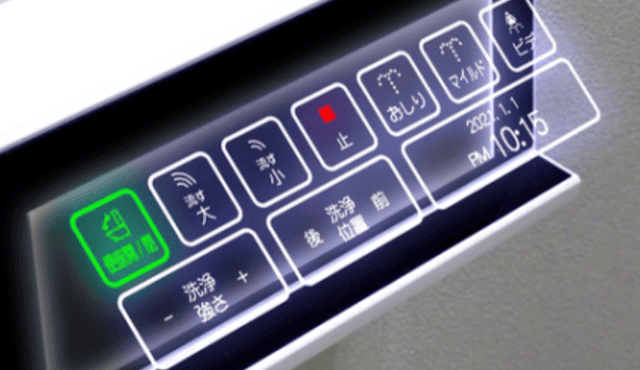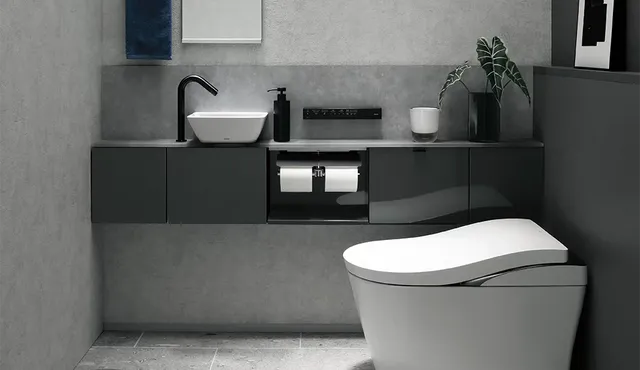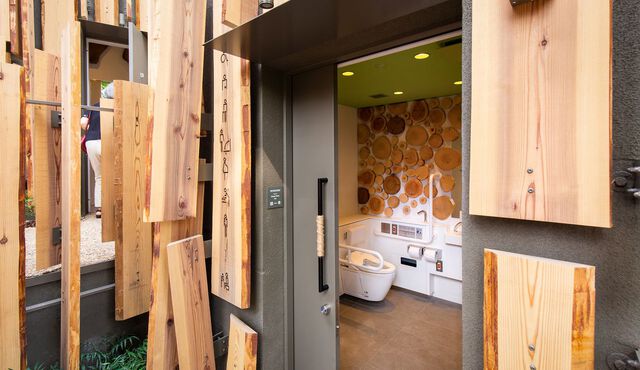Pritzker Prize laureates transform public toilets in Tokyo.
Tadao Ando, Fumihiko Maki and Shigeru Ban are some of the architects and designers participating in the Tokyo Toilet initiative by the Nippon Foundation, aimed at renovating public toilets. The Nippon Foundation recently launched the Tokyo Toilet project, which aims to build new public toilets in 17 locations in Shibuya, Tokyo. The foundation invited creators, including Pritzker Prize winners from Japan, to transform public toilets as a way to bring society closer to embracing diversity.

Japan is known as one of the cleanest countries in the world. Even public toilets have a higher standard of hygiene than in other countries. However, using public toilets in Japan was limited due to the belief that they are dirty and dark. To dispel these misunderstandings about public toilets, the Nippon Foundation, in collaboration with the Shibuya city government, has undertaken the transformation of public toilets in one city. To create an even higher standard, these toilets were designed by 16 leading creators and utilize advanced design, making them accessible to everyone regardless of gender, age, or disability, showcasing the possibilities of an inclusive society. In addition to construction, ongoing maintenance has also been planned to ensure people feel comfortable.

"Modern Kawaya" designed by Masamichi Katayama for the Tokyo Toilet initiative. Image: Satoshi Nagare, courtesy of the Nippon Foundation.
The 16 architects and designers who created the public toilets are Tadao Ando, Toyo Ito, Tomohito Ushiro, Masamichi Katayama, Kengo Kuma, Junko Kobayashi, Takenosuke Sakakura, Kashiwa Sato, Kazoo Sato, Nao Tamura, NIGO®, Marc Newson, Shigeru Ban, Sou Fujimoto, Miles Pennington, and Fumihiko Maki.
We present the most interesting toilets that are now open for use since August 2020, along with the thoughts of the creators on designing public toilets.

Transparent toilets in Yoyogi Fukamachi Mini Park and Haru-no-Ogawa Community Park, designed by Shigeru Ban.
"We have two concerns when entering a public toilet, especially one in a park. The first is cleanliness, and the second is whether someone is inside. Thanks to the latest technology, the external glass becomes frosted when closed. This allows users to check for cleanliness and whether someone is using the toilet from the outside. At night, the facility illuminates the park like a beautiful lantern."

The toilet in Jingu-Dori Park designed by Tadao Ando.
"I wanted this small architecture to go beyond the boundaries of a public toilet and become a 'place' in the urban landscape that provides immense public value. Using a clear and simple justification for the concept of this structure, I decided to use a circular floor plan with an extended roof and engawa. It was important for me to create a space that was comfortable and safe. Visitors can move inside the cylindrical wall with vertical blinds to feel the comfort of the wind and light from the surroundings. The feeling of safety will be emphasized by the free and centripetal circulation that passes to the other side. This toilet hidden in the greenery of Jingu-Dori Park will be known as 'Amayadori'."

"The Kalmar Toilet" designed by Fumihiko Maki is intended to be a popular addition to the Octopus Park.
"We are grateful for the opportunity to reconsider the use of public spaces through this project. By combining the function of a toilet with a service function, we have created a space that not only serves its original purpose, but also encourages people to visit the park. 'Kalmar Toilet' will be characterized by a harmonious combination of function and aesthetics, highlighting the beauty of the natural greenery of the park. I believe that a thoughtful approach to designing public spaces is crucial for creating a society that embraces diversity."

"Aga!" designed by Takenosuke Sakakura.
"The old toilet in Nishihara 1-chome was unfriendly and rarely used. We believed it was important to create a facility that not only meets the basic requirements of a public toilet, such as having an adequate number of toilets to ensure an acceptable waiting time, but also offers a unique charm that will encourage more people to use the facility. By building a bright and open facility in a limited space, we hope to improve the image not only of the toilet, but of the entire park. We hope that the toilet will illuminate the park like andon, or lanterns, creating a friendly public space for visitors."

Nao Tamura was inspired by Japanese origami art here.
"The bathroom is a place where we satisfy universal physical needs for all humanity, regardless of age, gender identity, nationality, religion or skin color. As we enter an era of increased awareness, how can a shared space like a public bathroom evolve to effectively adapt to our infinitely diverse needs? Living in New York, I had the privilege of observing the LGBTQ+ community living in accordance with their gender identity. Designing this public bathroom on a small triangular plot in Shibuya, I imagined a society that embraces the LGBTQ+ community and creates a space for them to live their truth. I realized that what enables a comfortable experience for every user comes down to safety, privacy, and urgency. With this in mind, I created three separate spaces that redefine the way a public bathroom establishes personal space. The project was inspired by Origata, a traditional Japanese method of decorative packaging. As a symbol of giving, this motif embodies the spirit of hospitality towards multinational visitors to the Shibuya district and carries my vision of creating a safe space that surrounds all users. This project represents my hope for a society where people from different backgrounds feel safe and are able to thrive."

Masamichi Katayama designed a public toilet, inspired by the origins of toilets in Japanese history, which were called Kawaya.
"We had in mind an object that distances itself from architectural concepts and elements: an object that stands freely in the park, as if it were a playground, benches or trees. In Japan, the source of the toilet is kawaya, originally written as 川屋, and later 厠 (also pronounced as kawaya). Kawaya was a hut (ya) standing by the river (kawa), dating back to the early Neolithic period of the Jomon era (10,000 to 6,000 BC). These huts were simple and primitive structures, often made of hardened earth or pieces of wood joined together. We tried to imagine the appearance and atmosphere of a primitive kawaya from the past, and created an "ambiguous space" that is both an object and a toilet, by randomly connecting 15 concrete walls. The spaces between the walls lead users to three different areas for men, women, and all. The design creates a unique relationship in which users are encouraged to interact with the object, as if playing with an interesting element of a playground."



